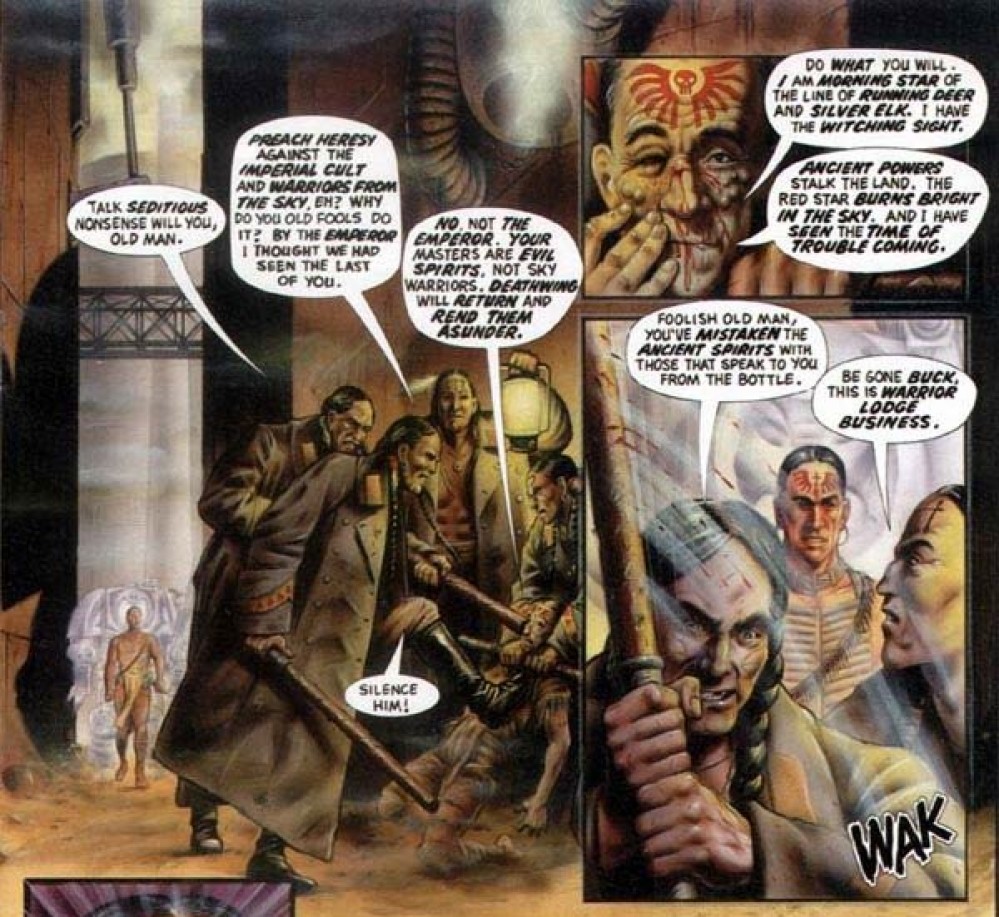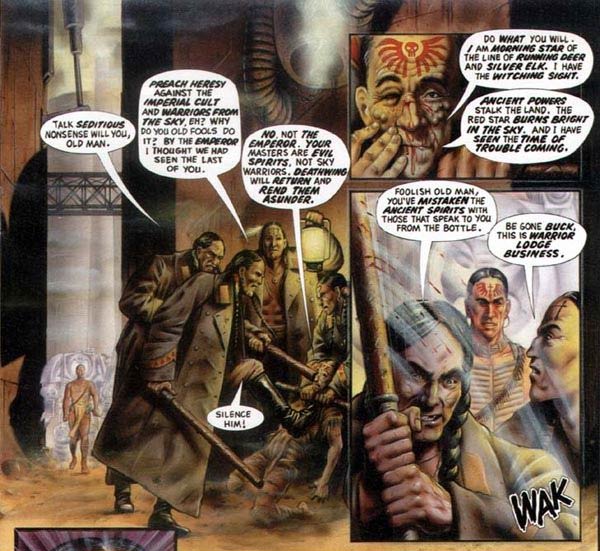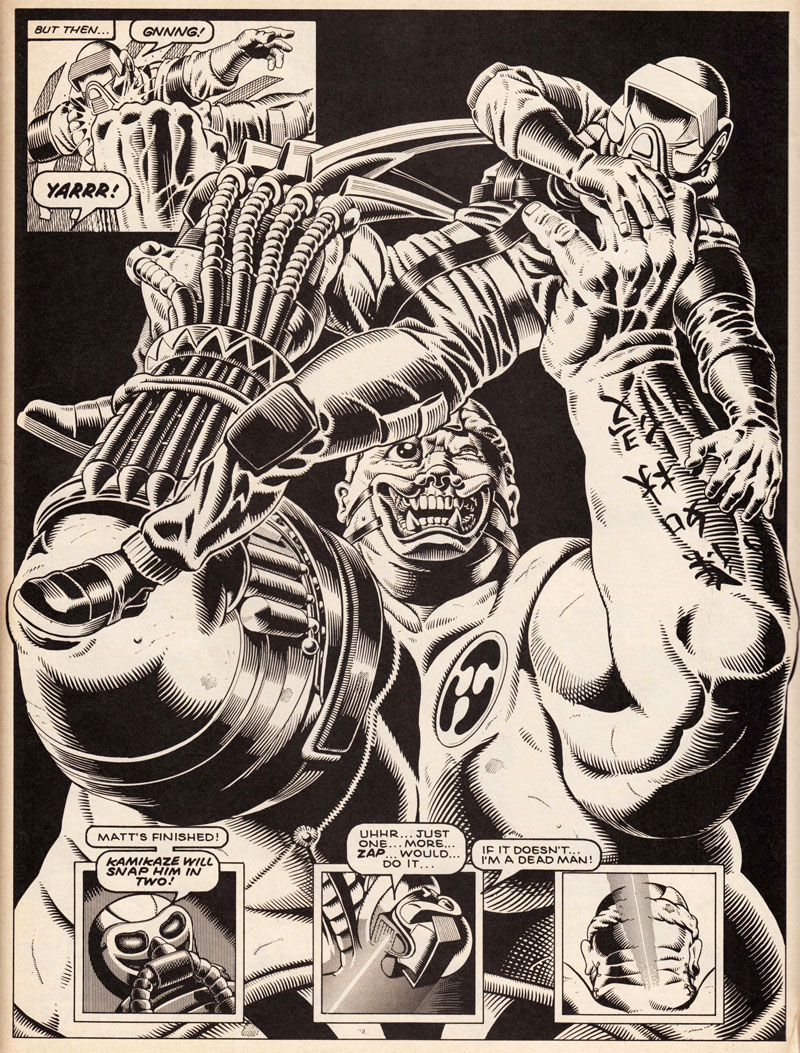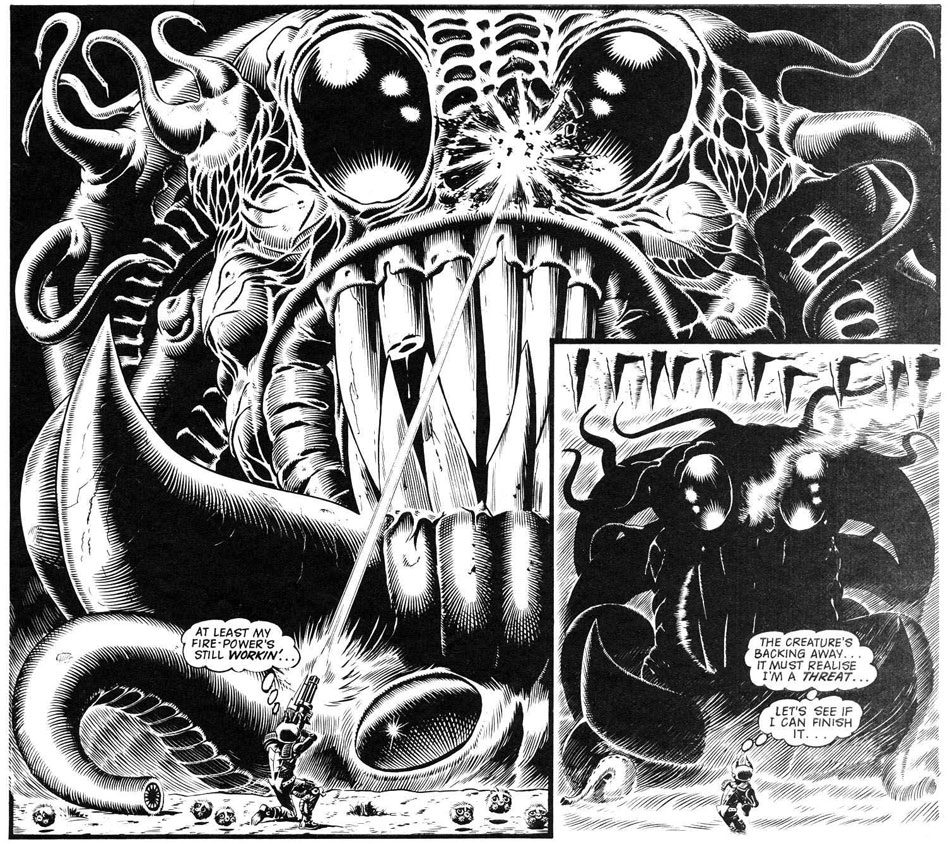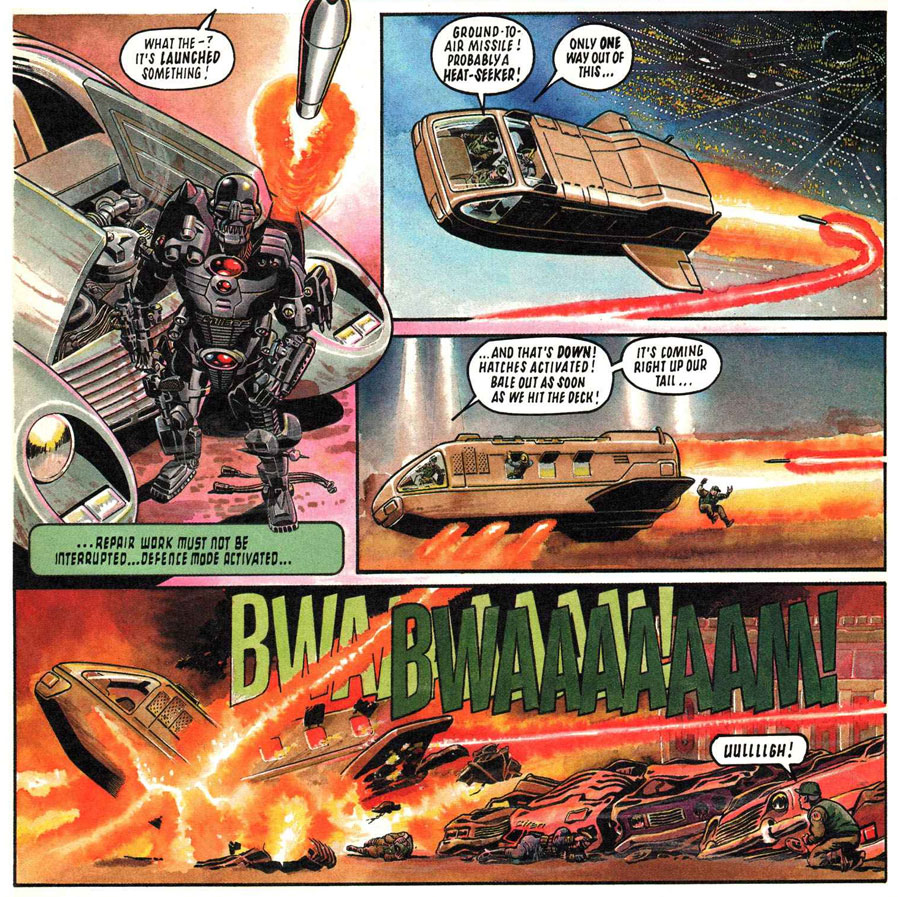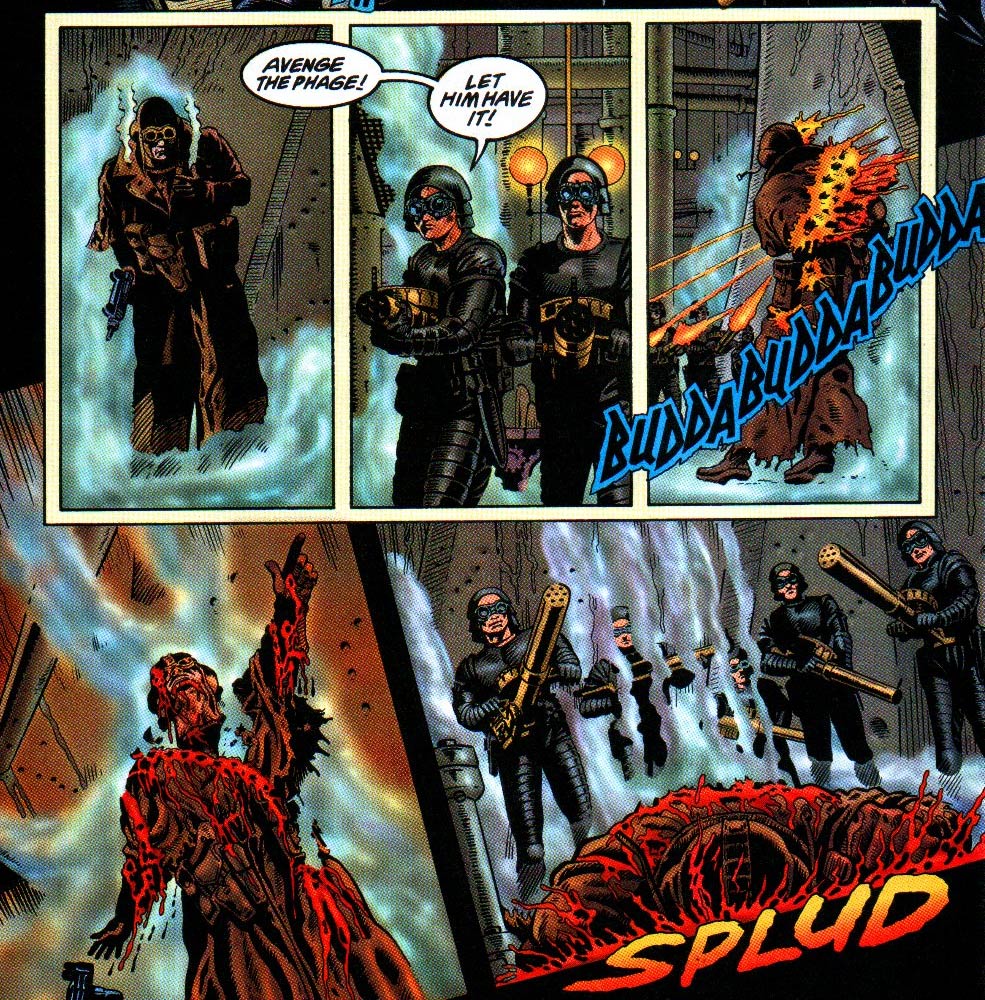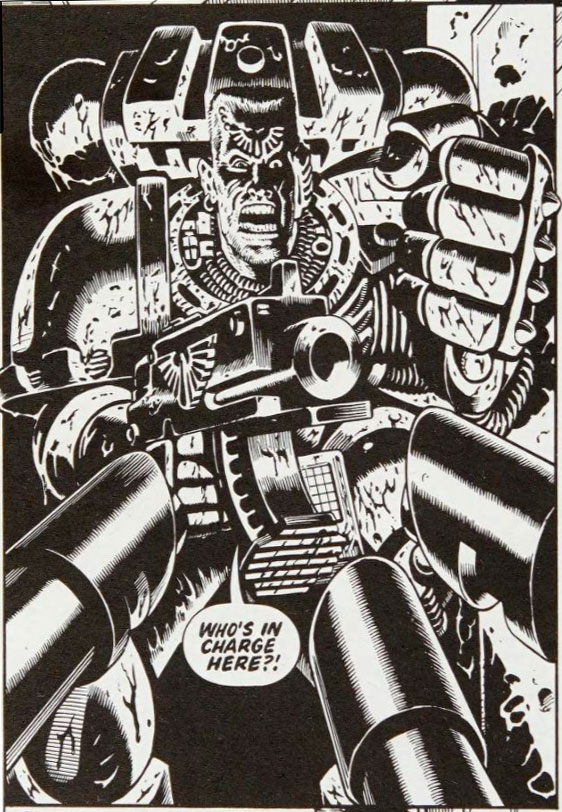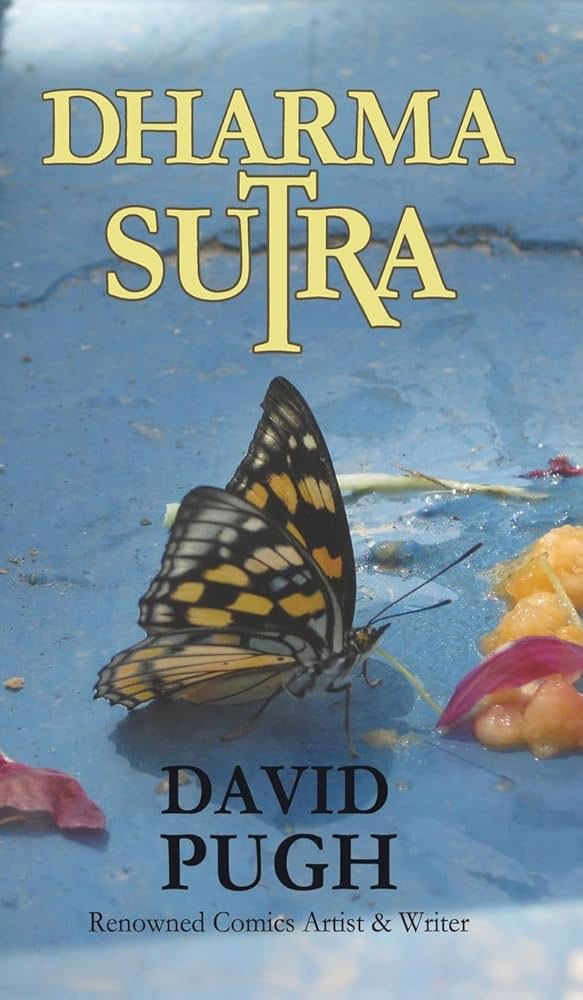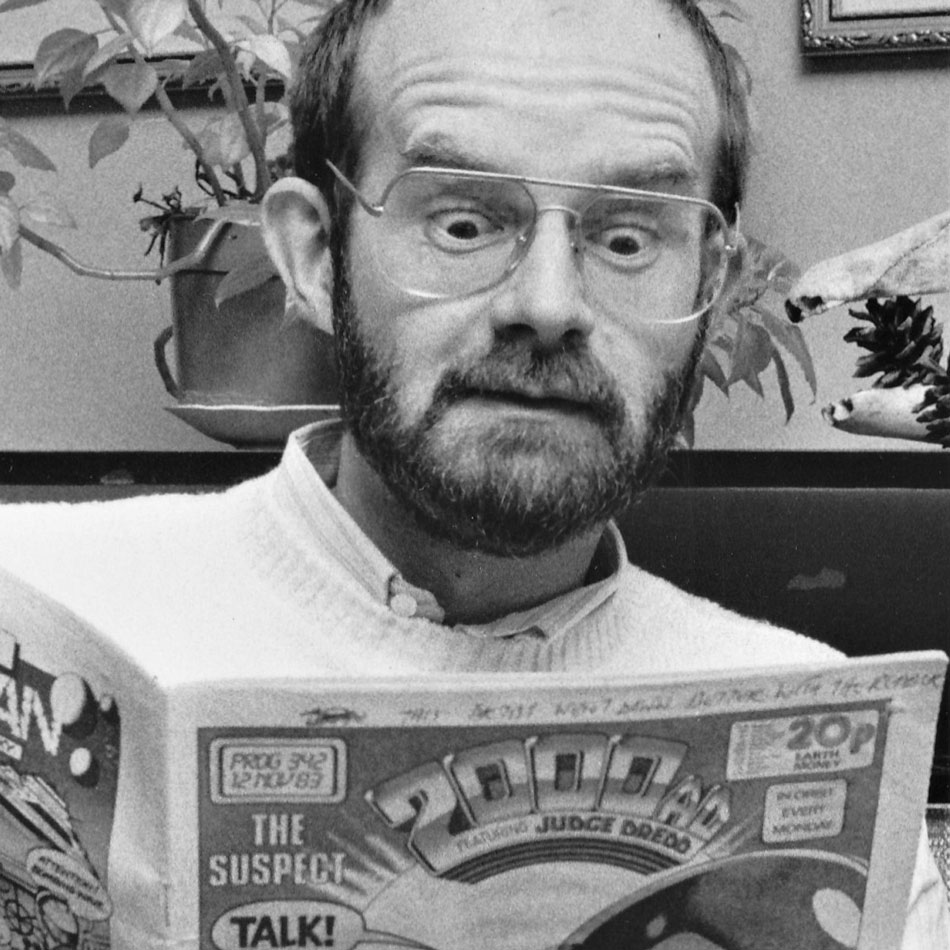'Obvious Tactics'.
David Pugh is a Welsh comic book artist and writer, whose career flourished between the late 1970s and late 2000s. Between 1985 and 1986, he was one of several artists to work on the fantasy series 'Sláine', published in 2000 A.D. For Fleetway Comics, he worked on the TV comic 'M.A.S.K.' (1985) and the science fiction series 'Wildcat' and its spin-off 'Loner' (1988-1989). Between 1989 and 1994, Pugh lent his talent to the revival of the classic SF aviation comic 'Dan Dare' in the relaunched magazine Eagle. He was one of the final artists of this series before its eventual cancellation. In the 1990s and 2000s, Pugh worked on a variety of science fiction series and graphic novels, including 'Neil Gaiman's Phage: Shadow Death' (1996). Pugh was also the colorist for the football comic 'Scorer' (1989-2011), scripted by Barrie Tomlinson and drawn by John Gillatt for The Daily Mirror. In 2011, Pugh started a new career as a novelist and charity worker in South East Asia. He is the founder of the migrant and refugee aid organization Bus Fare.
Early life and career
Born in Wales, David Pugh loved reading Eagle magazine as a child. Interviewed by W. Scott Crawford on his blog platformhub (13 July 2019), he vividly remembered noticing his first issue at age 9 or 10, while waiting in the doctor's office. He was enthralled by Frank Hampson's 'Dan Dare', particularly Dan's archvillain The Mekon. His mother snatched the comic away, warning that it would give him nightmares, but Pugh replied that he "wanted nightmares from this." While she never bought Eagle for him, he was allowed to read other comics magazines, such as Boys' World and Ranger. Among his earliest graphic influences were John M. Burns, Frank Bellamy and Don Lawrence. Pugh received his graphic education in Art College at Brighton and Kingston upon Thames, where he discovered different kinds of comics, namely by Marvel artists Neal Adams, Jim Steranko and Jack Kirby. He was very interested in their more experimental lay-outs. Through a friend he also received a copy of the French magazine Métal Hurlant and was shocked by Jean Giraud and Philippe Druillet's visionary artwork. Later in his career he also expressed admiration for Geof Darrow and Frank Miller.
However, Pugh didn't enjoy his higher education. The teachers used creative ideas by their pupils for their own professional advantage, without rewarding them. The only lessons he found useful were the life model drawing classes, but this teacher was unexpectedly fired. Pugh didn't last long at the academy either. He was kicked out for being too disobedient and told he would never make it as a graphic designer. Much to his vengeful delight, Pugh already had a job as illustrator and designer for Pier 1 Imports. He remained active in the advertising industry, working for agencies like Brockie, Haslam and Allen in London and the Thomson Organization in Wales. He was also active as a design consultant for Holiday World International and Oberland Holidays.
Early comic career
The heavy workload in the advertising industry eventually caused Pugh health problems. Settling down in a cottage in the Welsh town of Aberdare, Pugh went to work in the Creative Services studio of the Thomson Regional Newspapers. After three years, one of the editors asked him whether he wanted to write and draw a comic strip, intended for their weekly newspaper Merthyr Express. The end result, 'Looking Glass Library' (1976), revolved around two children and their dog who find out they can enter the pages of literary classics. This leads to adventures in classic novels like Lewis Carroll's 'Alice Through The Looking Glass', Jules Verne's '20,000 Leagues Under the Sea', Mary Shelley's 'Frankenstein' and the Welsh epic 'The Mabinogion', among other stories. When Thomson brought out a weekly freesheet, The Glamorgan Star, Pugh created another serialized comic for them: 'Captain Classified-Star Ranger' (1979-1981). The superhero character was originally intended to simply sell classified advertising. To boost sales, Pugh was asked to update him, and to give him a sexy assistant, Princess Astra. Pugh based the Captain's design on the 'Judge Dredd' character by Pat Mills, John Wagner and Carlos Ezquerra. Soon afterwards, Pugh became a member of the Society of Strip Illustrators, who offered their members publication space in their monthly newsletter. In these pages, comic writer Pat Mills noticed Pugh's work and invited him to come and work for the adult comic magazine 2000 AD.
'Slaine' (2000 AD #453, 18 January 1986).
Sláíne
Pugh's breakthrough as a comic artist was drawing the fantasy series 'Sláine' (1985-1986) in 2000 AD. Set in a vague Celtic age, Sláine is a warrior who was banished from his tribe. Together with his dwarf sidekick Ukko and Medb, a woman he rescued from from ritual sacrifice, he roams the country. Many plotlines feature the barbaric hero fighting monsters and his arch nemesis Lord Weird Slough Feg. Scriptwriter Pat Mills was influenced by ancient Celtic myths, like 'Cú Chulainn' and Robert E. Howard's novels about 'Conan the Barbarian', drawn by Frank Frazetta. The earliest 'Sláine' comics were drawn by Angela Kincaid, Massimo Belardinelli and Mike McMahon. Together with fellow artist Glenn Fabry and writer Bryan Talbot, Pugh worked on the narratives 'The Time Killer' (1985) and 'The Tomb of Terror' (1985-1986). He also restyled the series and introduced a new villainous character Elfric, a three-eyed demon with blue skin. He is capable of time traveling and used this to his advantage when helping the ancient Romans invade Britannia and the Vikings plunder Ireland. Pugh also designed the god-like leader Guledig, wizard Myrddin and Murdach, son of real-life medieval Irish king Brian Boru.
After his second 'Sláine' series, Pugh took two weeks off to visit Sri Lanka. During his absence he was fired from the 'Sláine' strip, but he only found this out during a comic convention in Birmingham. Sitting at his table, Pugh noticed Mike McMahon, who had been fired from 'Sláine' to make room for him. Pugh always felt bad for his colleague, but now being in his direct presence made it all even more uncomfortable. As fate would have it, Mike Collins then came by to introduce himself, and told Pugh that he had been appointed as the new artist for 'Sláine'. The shock was awful. Interviewed by Richard Sheaf for boysadventurecomics.blogspot.com (24 January 2020), Pugh confessed that, even after nearly 30 years, he "never truly recovered from the pain and (...) knew how wretched Mike McMahon must have been feeling." Though he did add that Pat Mills had apologized to him multiple times, even in print.
'Kamikaze - part 5' (M.A.S.K. #9).
M.A.S.K.
One of Pugh's stories for the 1985 2000 AD Summer Special, 'The Man Who Couldn't Die', motivated editor Barry Tomlinson to offer Pugh a new job at a new magazine. M.A.S.K. was based on the DIC animated TV series and Kenner toy line of the same name, about a special masked taskforce who operate transforming armored vehicles in their ongoing battle against the terrorist organization V.E.N.O.M. The M.A.S.K. magazine started as a fortnightly comic, published by Fleetway, but the TV show proved so popular that it soon became a weekly. Working on storylines like 'Kamikaze', Pugh followed scripts by Peter Milligan and was delighted to receive many M.A.S.K. toys and other merchandise in his mail for him to copy in his drawings. Each issue had five stories, drawn by many anonymous artists, including Juan Escandell, Ian Kennedy, Peter Milligan, Carlos Pino, Kim Raymond, Anthony Williams and Joe Colquhoun.
'Loner' feature from Wildcat #7 (14 January 1989).
Wildcat: Loner
For Fleetway's sci-fi weekly Wildcat, Pugh was the regular artist of the 'Loner' feature (1988-1989). The 'Wildcat' comic was set in the year 2500 when a group of colonists leave Earth and search for a new home planet. On board of their spaceship are mission commander Turbo Jones, the black mercenary Loner, commander Kitten Magee and extraterrestrial alien Joe Alien. The stories were written by Barry Tomlinson, his brother James (under the pseudonym James Nicholas) and David Robinson. Apart from Pugh, stories were drawn by Ian Kennedy, Vanyo (pseudonym of Eduardo and Vicente Vaño Ibarra), Ron Smith, José Ortiz and Jesús Redondo. Besides a group story, each issue contained solo stories with the four cast members, for which Pugh drew the stories with the Loner character. Pugh was flattered when fellow artist Kev Hopgood said that Pugh created the "most convincing black character in British comics." When Wildcat merged with the Eagle magazine in March 1989, Pugh passed on the 'Loner' feature to Eric Bradbury.
'Dan Dare: Pilot of the Future' (Eagle #464, 9 February 1991).
Dan Dare
Moving on from Wildcat to the new Eagle title, Pugh had the opportunity to continue the classic sci-fi aviation comic 'Dan Dare'. Dan Dare was originally created in 1950 by Frank Hampson as the most popular series in the comic magazine Eagle. Discontinued in1967, 'Dan Dare' made a comeback in 1977-1979 in the magazine 2000 AD. It wasn't until Eagle was relaunched in 1982 that the brave aviator returned in its magazine of origin. During this period, several artists worked on his modernized adventures, including Gerry Embleton, Oliver Frey, John Gillatt, Ian Kennedy and Carlos Cruz. Between 1989 and 1994, Pugh drew 'Dan Dare' in alternation with Keith Watson, working from scripts by Tom Tully. In 1994, Eagle was discontinued, and Dan Dare permanently brought his plane to the ground too. Many sources have cited Pugh as the "last" artist to draw 'Dan Dare', although occasional new adventures have been released in the decades beyond. However, these were usually one-shots or part of a mini series.
Scorer
During the last eleven years of its run, Pugh was associated with the football-themed daily comic 'Scorer' (1989-2011) in the tabloid newspaper The Daily Mirror. The adventures of football player Dave Storry and his girlfriend, fashion model Ulrika, had been created at the suggestion of editor John Allard to serve as The Daily Mail's answer to the football comic 'Striker' by Pete Nash in rival tabloid paper The Sun. 'Scorer' was originally scripted by Barrie Tomlinson and drawn by Barrie Mitchell. In 1990, Mitchell passed the pencil to John Gillatt, who in turn was replaced by David Sque from 2003 until the final episode in 2011. During the Gillat and Sque years, David Pugh was involved in the comic's coloring, along with Martin Baines. In the second half of the 2000s, Pugh gave the strip a modern edge by adding full color and photographic backgrounds. With 3D computer effects, Pugh crafted Dave Storry's house and furnishings in 3D Studio Max. In a 14 May 2016 interview with Lavender Sweep Records, Pugh explained: "It was literally a film set, with the virtual cameras shooting the background scene to match the drawn pose, a bit like movie green screen work." However, on Saturday 19 February 2011, 'Scorer' came to a sudden end due to the production costs.
'Shadow Death', #3 (August 1996).
Later commercial work
Together with writer Alan Grant, David Pugh made the horror story 'Garbage Man', running in issues #27-#29 of the magazine Toxic (September-October 1991). In 1993, Pugh and writer Simon Davies made the science fiction comic book 'The Last Planet', starring a 13-year old extraterrestrial fish-faced girl, Brill, who lives on the last inhabited planet in the universe. Pugh put a lot of effort in this book, which turned out to be a tremendous bestseller and was featured as "Spotlight of the Month" in the Previews catalog of the American distribution company Diamond. Unfortunately, publisher Mindbenders (MBS) had not expected all 1,500 copies would sell out that fast, and lacked money to print more. The American distributor subsequently terminated their contract with MBS, leaving Pugh behind with about 82 pages of a follow-up that have never been published.
In 1996, Pugh was hired by the American company Tekno Comix to work on the 6-issue limited series 'Neil Gaiman's Phage: Shadow Death' with writer Bryan Talbot and inker Tim Perkins. Pugh designed many spacecraft for Games Workshop, and has serialized his graphic novel 'Warhammer 40,000 - Obvious Tactics' in Inferno! magazine. It was published in book format in the Black Library in 1997. Pugh also worked on comic books for the U.S. publisher AC Comics ('Cape and Mask', 2003), and has been an illustrator for adventure game books with Disney and SEGA characters, as well as educational books for Belitha Press.
'Obvious Tactics'.
Charity
At the turn of the 1980s into the 1990s, Pugh had built up a productive career in comics. Although he liked drawing comics, the stress didn't give him deep creative fulfillment. He wanted to rediscover the joy he had at the start of his career and push the limits of his artistic abilities. At the same time he also searched for deeper spiritual meaning. During a book signing session at the Games Workshop Golden Demon convention in Birmingham, a man told him he always wanted to be a comic artist during his youth, but was glad he never did, because he became a musician and "got a life". This insult made Pugh wonder whether comics were all he ever wanted to do. Although he brought potential buyers to each convention, he never saw any of the 10% sales profits he was promised.
Since Pugh worked six days a week, he had saved enough money to go traveling. He visited countries like Gambia, India, Africa and Thailand, where he sometimes stayed for longer periods of time. Pugh devoted more of his time and energy to social causes and charity organizations. In April and May 2009, he worked as a graphic designer and computer arts teacher in the Tibetan refugee community in Dharamsala, India. He returned there in 2010, this time bringing his daughter along to help with the classes. Originally he planned to stay for only four months, but around the same time he heard that The Daily Mirror would cancel 'Striker', the comic he had been colorizing for several years. This motivated Pugh to buy a one-way ticket and just see what would happen after his four-month teaching schedule was over. He spent three months teaching in Dharamsala and two months in Rishikesh, India. In Puri, India, he visited the Jagannath Temple, where a local guru fascinated him. When he asked a priest what he had to do to follow the guru's teachings, he received an unexpected answer: "One thing: he wants you to be happy." This made Pugh realize what he had been missing all these years. He decided to enjoy life more and focus more on writing rather than drawing. When his visa ran out, he traveled across Nepal for three months. He didn't return to England until June 2012.
In 2011, Pugh started auctioning off some of his old artwork to support migrant workers and refugees in India and Africa. This led to the foundation of Bus Fare, a charity organization set up to help migrant workers and refugees visit their families. David Pugh has been active in India, where he worked with Tibetan refugees in Dharamsala and set up a street children project in Rishikesh. Pugh is also a designer and computer graphics teacher with the LHA Charitable Trust.
'Dharma Sutra'.
Novels and other books
Together with author Doug Moench and fellow illustrator John Howard, Pugh collaborated on a 3D children's book, 'The Boy Who Walked On The Ceiling'. In 2017, he published an essay in the anthology 'Minds Wailing in Remembrance', a collective tribute to Tenzin Delek, a Tibetan monk who died in a Chinese prison. In 2019, Pugh published his first novel, 'Dharma Sutra' (Austin Macauley, 2019), a romantic-erotic-spiritual tale set in India. The book is inspired by people he met during his travels and the spiritual insights he achieved. The main character, Jeffrey Dharma, is a disillusioned comic artist who wants to follow the Hindu path of Vanaprastha, the time of life when one gives up responsibility. 'Dharma Sutra' is the first part of what Pugh intends to become a trilogy. Since the protagonist's name sounds similar to infamous serial killer Jeffrey Dahmer, there was some pressure from publishers to change the character's name to Pugh's own.
Later years
Since February 2011, Pugh has largely retired from creating comics. Even when he was asked to contribute to a comic book celebrating the 30th anniversary of 'Sláíne', he turned down the offer. Several of his colleagues were perplexed, since getting well-paid assignments is a rarity, especially in today's industry. But Pugh didn't enjoy looking back and found far greater creative delight in writing than drawing. He did write the foreword for a compilation of his 'Loner' comics, published by Rebellion.


